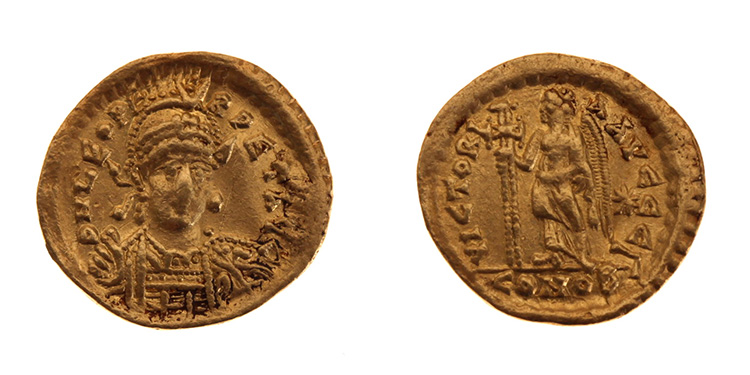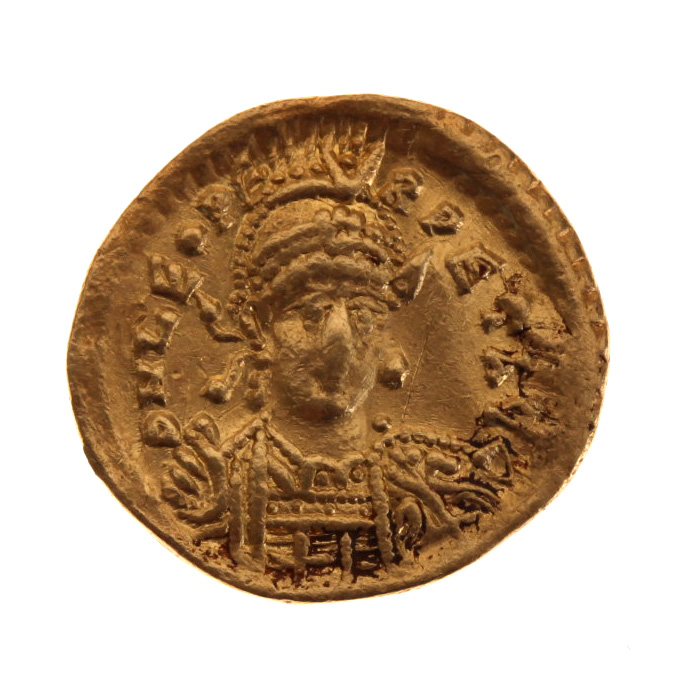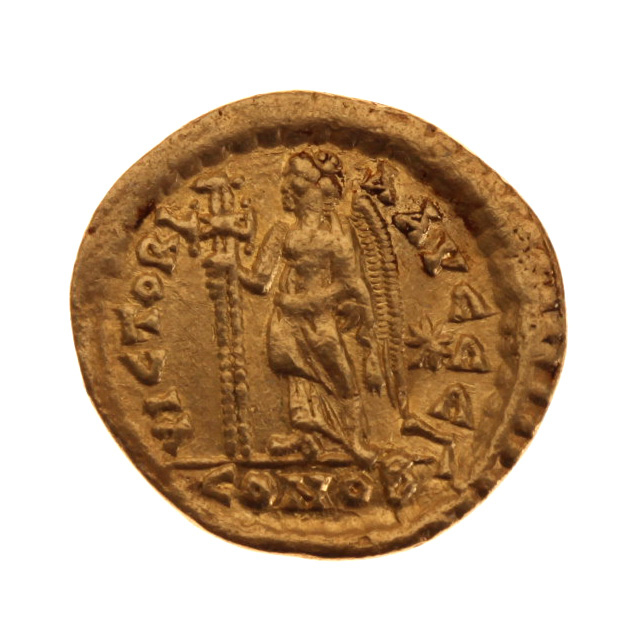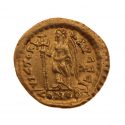LEO I, GOLD SOLIDUS



Reverse: VICTORIA AVGGG Z / CONOB. Victory standing left, holding jeweled cross; star to right.Excellent solidus, practically uncircullated, in EF+/EF condition, conserving absolutely details in both sides and high quality metal, including the main part of its original luster.RIC 605. Constantinopolis mint, AD 457-474. 4,5 g – 20 mm
https://www.ma-shops.com/an/item.php?id=6
Leo I (401 – 18 January 474) was an Eastern Roman Emperor from 457 to 474. A native of Dacia Aureliana near historic Thrace, he was known as Leo the Thracian. Ruling the Eastern Empire for nearly 20 years, Leo proved to be a capable ruler. He oversaw many ambitious political and military plans, aimed mostly for the aid of the faltering Western Roman Empire and recovering its former territories. He is notable for being the first Eastern Emperor to legislate in Greek rather than Latin. He is commemorated as a Saint in the Orthodox Church, with his feast day on January 20.
Leo I (A.D. 457-474), Gold Solidus. Mint of Constantinople, struck A.D. 457-68. D N LEO PE-RPET AVG, pearl-diademed, helmeted and cuirassed bust facing, slightly inclined to right, rev. VICTORI-A AVGGG E, Victory standing left, supporting a long jewelled cross, a star on right, CONOB in exergue, 4.42g., 6h (RIC 605; Depeyrot 93/1). Lustrous, extremely fine.
Obverse
Bust of Leo I left, bearded, pearl-diademed, wearing consular robe, holding [i]mappa[/i] in right hand and cruciform sceptre in left hand over left shoulder.
Lettering: D N LEO PERPET AVG
Translation:
D (-ominus) N (-oster) Leo Perpet (-uus) Aug (-ustus) :
“Our Lord Leo, Perpetual August”.
Reverse
Leo I nimbate, enthroned facing, in consular robe, holding [i]mappa[/i] in right hand and cruciform sceptre in left hand; in left field, a star.
Mintmark in exergue.
Lettering:
VICTORIA AVGGG
⭑
THSOB
Translation:
Victoria Auggg (=augustorum) :
“Victory of the Augusts”.
Comments
Identification of this coin easily induce some confusion as four very similar variants are known (RIC#620 to 623) depending on the combination of obverse and reverse styles from Constantinopolis and Thessalonica mints. We are have what would be an obverse with Constantinopolis style and a reverse with Thessalonica style.
Style of Leo I wearing consular robe would allow to place the strike in 462 or in 466, two of the years when he was consul.
01-1065





